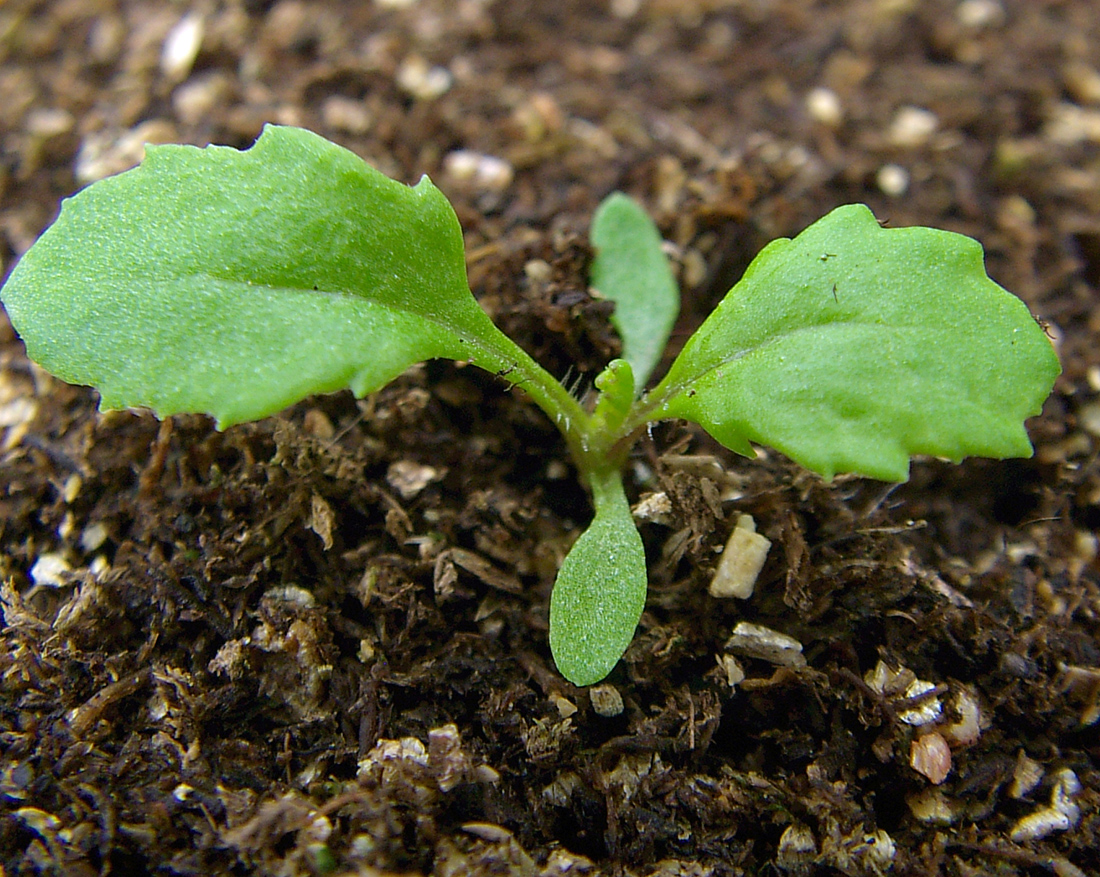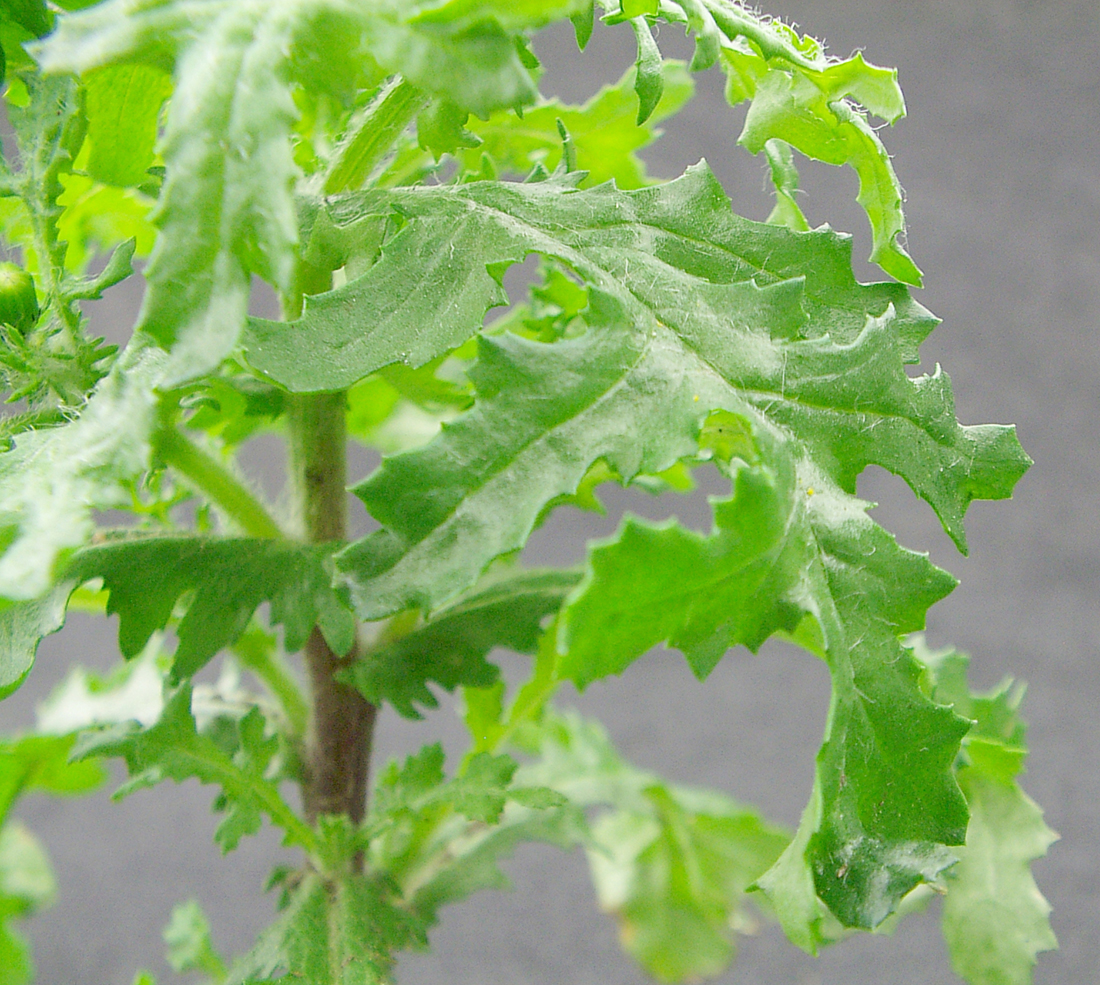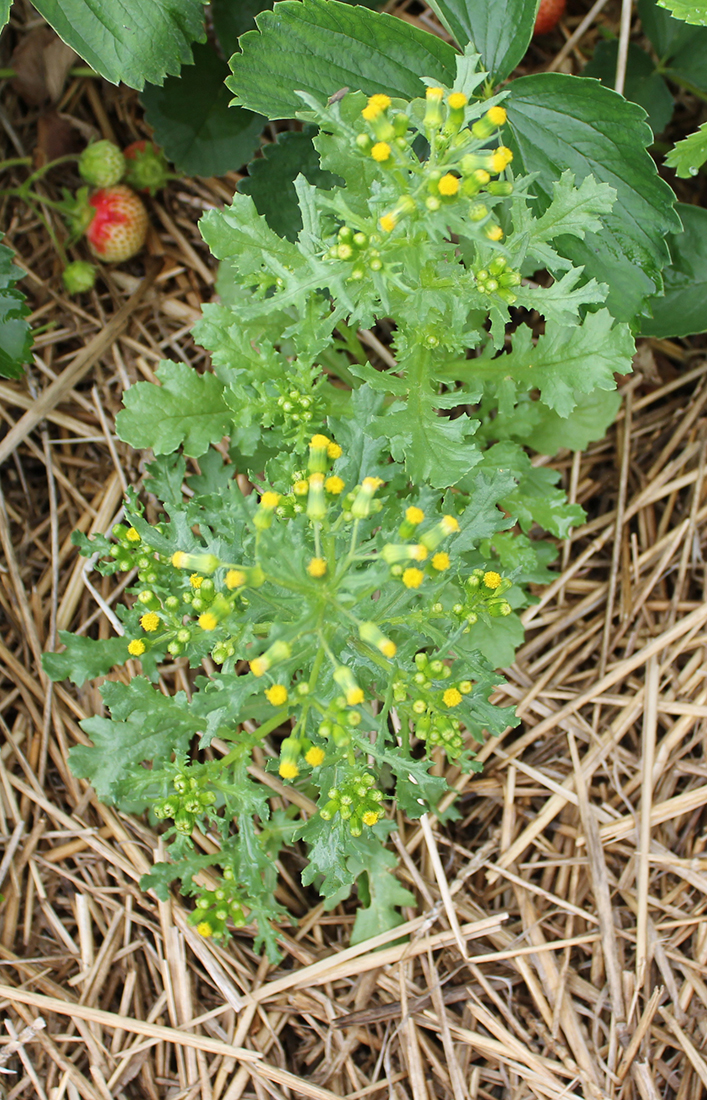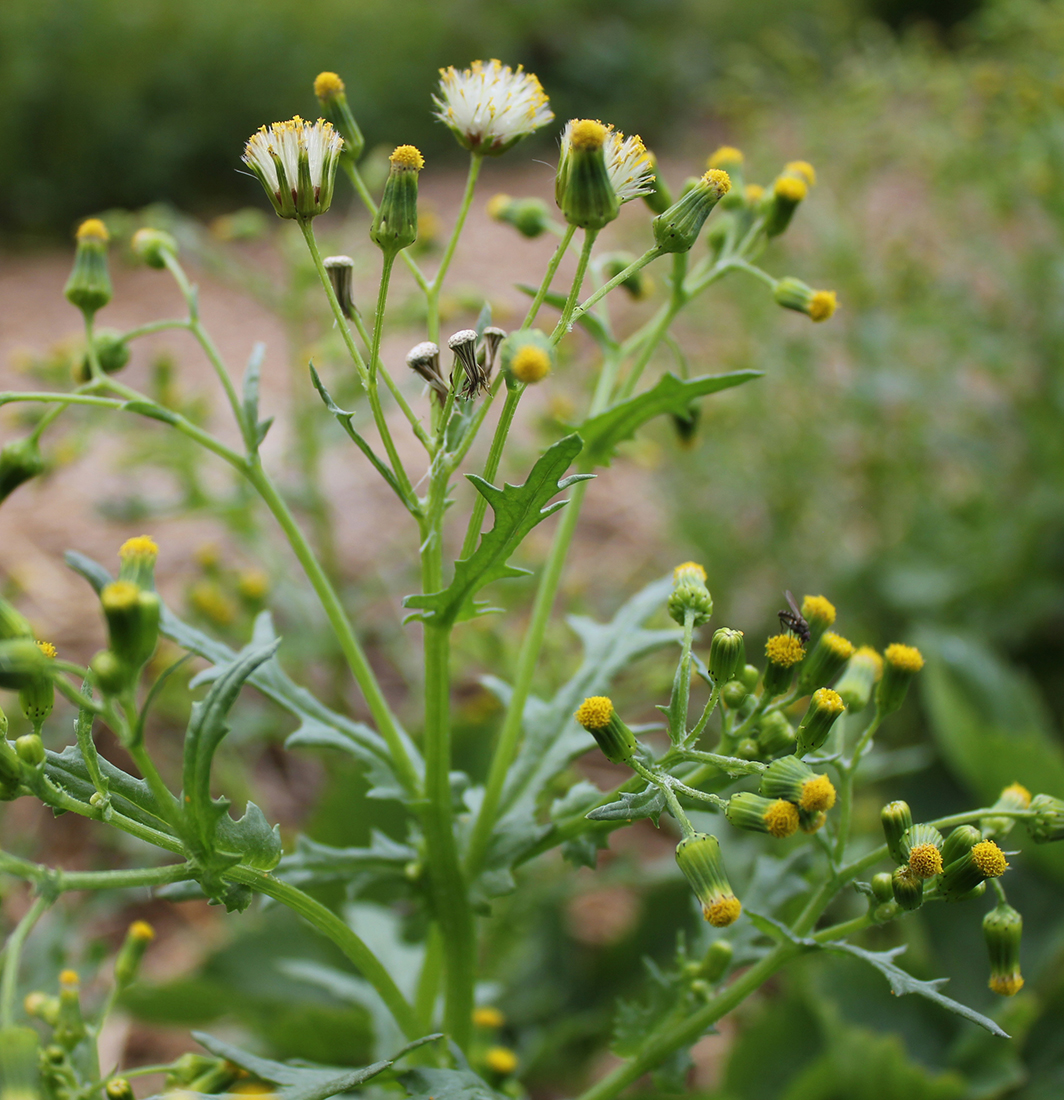Common Groundsel
Poisonous to livestock when consumed.
- Composite or aster (Asteraceae family):
- Senecio vulgaris L.
- EPPO code:
- SENVU
- Other names:
- Groundsel, chickenweed, grimsel, simson, bird-seed, ragwort
Species information
- Lifecycle:
- Annual or winter annual.
- Propagation:
- Reproduces by seed.
- Emergence:
- Most seedlings emerge in the spring and fall.
- Range and habitat:
- Common groundsel is found throughout Ontario. It is most commonly found in cultivated crops, such as strawberries. It can be troublesome in container-grown and field nursery crops and can also be seen in flower beds and road sides.
- Toxicity:
- Ingestion of common groundsel by livestock can lead to liver disease with symptoms including weight loss and weakness that can take several weeks to develop. Poisoning is related to consumption, and cattle, horses and swine are more sensitive to poisoning than sheep and goats that can consume twice the amount before seeing symptoms (Robinson et al., 2003).
Identification clues
Leaves
- Cotyledons:
- Oval or club-shaped tapering into a short stalk.
- Young leaves:
- The young leaves of common groundsel are round to egg shaped. They have a smooth surface with wavy to finely toothed margins.
- Mature leaves:
- Mature leaves are alternate and vary from shallow to deeply lobed. They, too, are smooth, although they sometimes have sparse hairs on the leaf’s surface. Margins are toothed.
Mature plant
- Stem:
- The stem of common groundsel is erect and grows between 10 and 60 cm in height.
- Flowers:
- Clusters of cylindrical flower heads that contain only yellow disk-floret are borne at the end of the stems. The green involucral bracts (below the yellow disk florets) have a distinct black tip.
- Fruit:
- Common groundsel produces a red-brown to gray-brown fruit that is 2–4 mm long. It is vertically ridged and attached to a white fluff (called a pappus), which allows seed dispersal via wind.
- Root:
- Short taproot with secondary fibrous roots.
Often mistaken for
We could be wrong, but rarely is this species confused with others, especially when flowering where it has its distinct black tipped bracts underneath the cylindrical yellow flowers.




Updated: January 13, 2023
Published: January 13, 2023